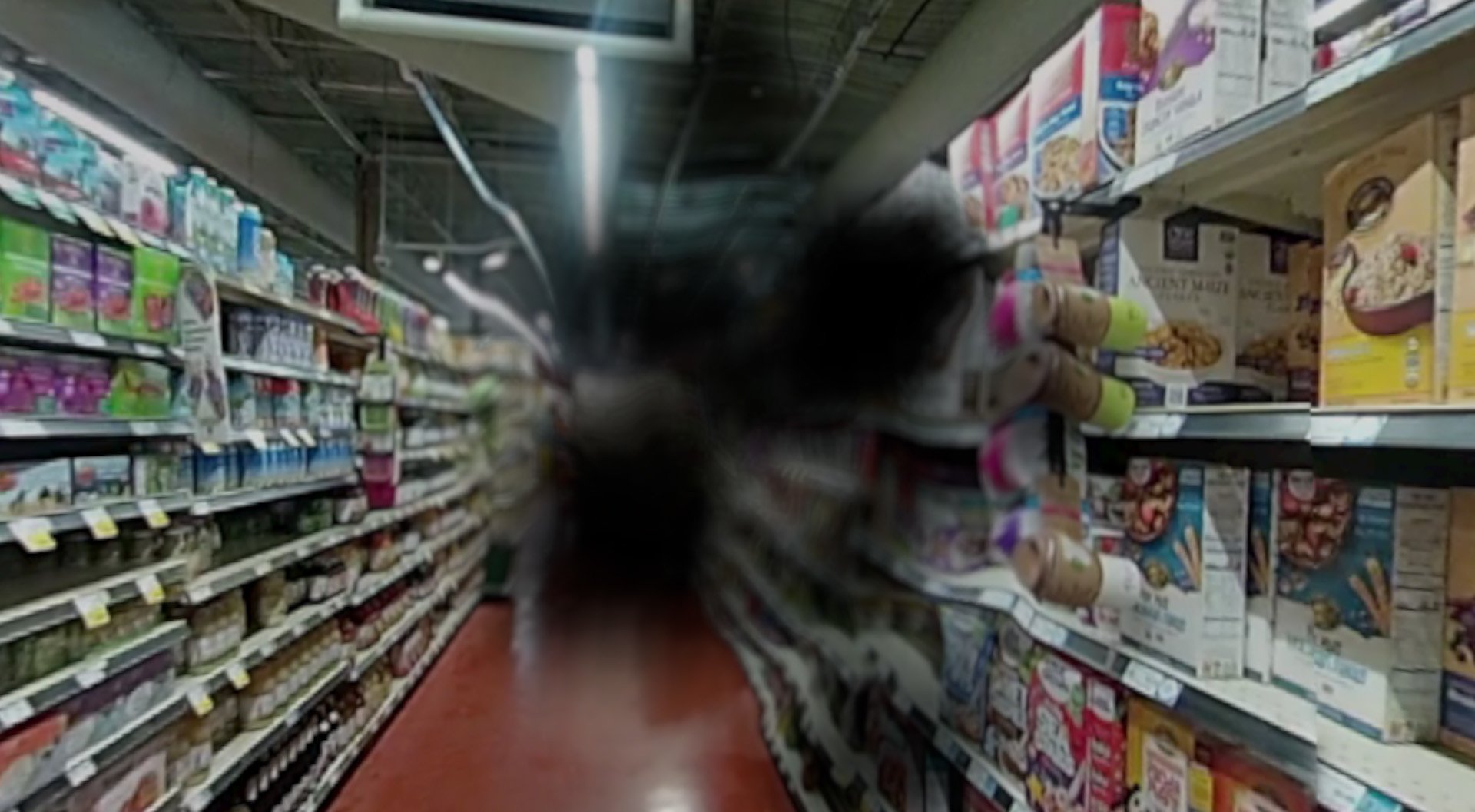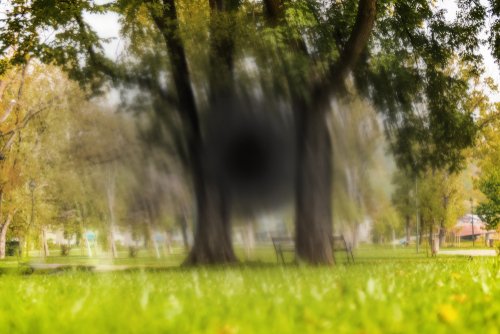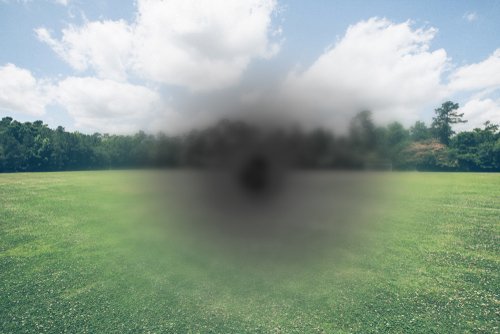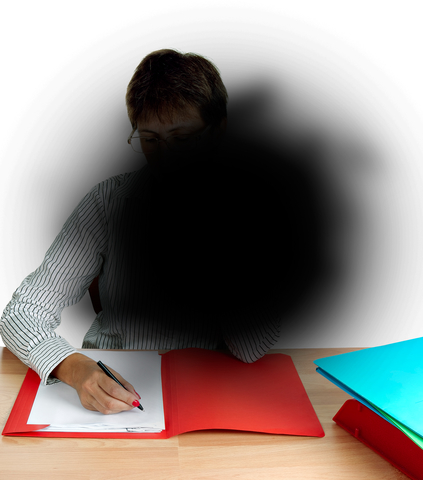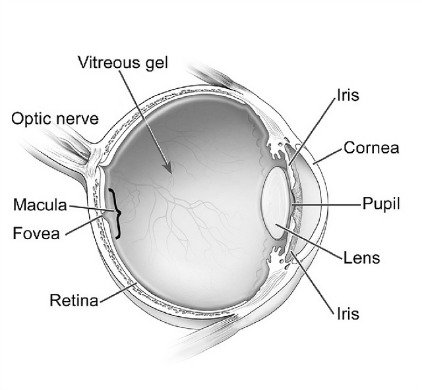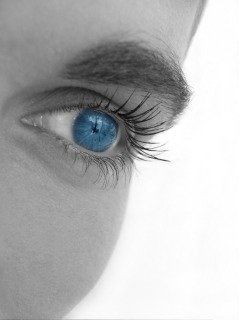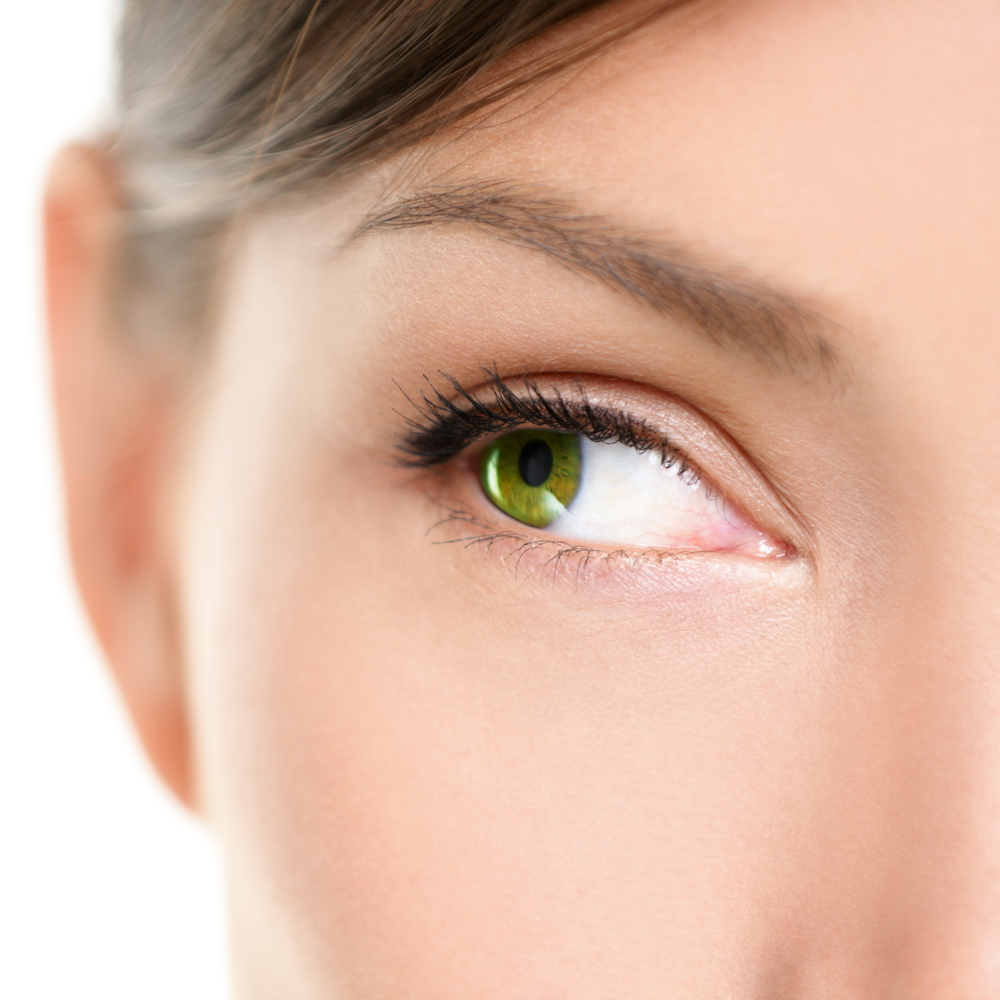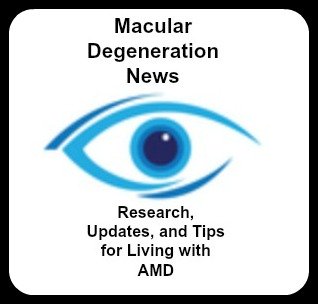Central Scotoma
A central scotoma is a grey, black, blurry or blind spot in the middle of one's vision. This central blind spot can be due to geographic atrophy (advanced dry macular degeneration) or to the damage of photoreceptor cells from choroidal neovascularization (leaking blood vessels).
Central Scotoma Causes
There are many medical conditions that can cause this loss of central vision or blind spot. Some of them are:
√ Strokes
√ Traumatic Brain Injuries
√ Disorders that affect the retina, choroid, or the optic nerve
√ Result of laser photocoagulation treatment
In this picture, you will get an idea of what someone sees who has advanced macular degeneration - there is normal side or peripheral vision, with a black or gray spot right in the middle of one's vision.
This loss of central or straight ahead vision makes it difficult to recognize faces or to read.
It is possible to have more than one blind spot or scotoma. Some patients with macular degeneration will have multiple scotomas.
Central Scotoma Symptoms
The most common cause of this blind spot is age related macular degeneration (AMD). The frustrating part of AMD is that the peripheral vision remains fine, while the more important central vision that we need for daily living becomes impaired.
There are different types of blind spots depending on where the vision loss appears. With macular degeneration, it is called a central scotoma.
The decrease in sharp central vision with macular degeneration affects what we see straight in front of us.
The macula is a tiny spot in the back of the retina that is responsible for this central vision. As macular degeneration progresses the photoreceptor cells, especially the cone cells, often die because of problems with getting oxygen and nutrients to the cells and waste products building up.
Symptoms of macular degeneration also develop when abnormal, leaky blood vessels start to grow and leak fluid causing damage and degeneration to the cone cells. This type of aged related macular degeneration (AMD) is called wet AMD.
Central Scotoma Help
Having a blind spot in the center of your vision is very disabling and frustrating. I don't want to diminish this loss nor how it affects the independence of those who are living with one...but I don't want to leave you thinking that there is nothing out there to help you.
You can learn to adapt to central vision loss by maximizing the vision you do have. Some tips to help one “see around” the scotoma include ...
using more and better lights,
utilizing contrast, and
magnifying your reading with magnifiers, ebook readers or magnifying software.
Switch to talking devices such as voice activated smart phones, an Amazon Echo, books on tape, text to speech software, or talking watches.
Eccentric Viewing
Learn to use your side or peripheral vision. You may never have heard of eccentric viewing before, but it is simply a name given to a new way of looking at things.
Eccentric viewing is a technique that involves looking slightly away from an object in order to see it using your peripheral vision instead of your straight ahead or central vision.
By using your peripheral vision you are using the rod cells instead of the damaged cone cells in the macula or fovea.
Although our cone cells are responsible for detailed and color vision, the rod cells, with some training, can adapt to help with these functions. The eyes and the brain can learn new techniques and ways of seeing the world with:
1) proper training
2) lots of practice
3) the appropriate visual aids
To learn more about eccentric viewing and to see a video that explains how it works go to Eccentric Viewing
Optimizing Your Vision with Preferred Retinal Location Training
Another term for using the part of our vision that offers more detail and clarity is Preferred Retinal Location.
"People who have central vision loss, caused primarily by age-related macular degeneration, can sometimes adapt by developing a new fixation point in a different part of the retina, called the preferred retinal location (PRL)."
"Taking advantage of visual plasticity that persists even in old age, the brain and eye can partly compensate for loss of the fovea by developing a preferred retinal location (PRL); that is, shifting fixation to another nearby spot in the retina. Patients learn to use an area of their peripheral vision to substitute for their lost central vision."
Macular Degeneration, Central Vision Loss, and Preferred Retinal Location
Steady Eye Strategy
Nick Collins from Optima Low Vision Services describes the different types of central vision loss caused by macular degeneration and discusses the use of eccentric viewing.
Living with a central scotoma indeed impairs one's vision, but learning to adapt in ways that maximize the vision one does have can make a difference in your independence and ability to continue to do the activities you enjoy.
Go from Central Scotoma to Macular Degeneration Symptoms
Go from Central Scotoma to WebRN Macular Degeneration Home
√ Prevention of Macular Degeneration?
√ Tips for Daily Living?
√ Food Suggestions for a Macular Degeneration Diet?
√ Ideas on Visual Aids to Maximize your Sight?
If you said "yes" to any of the above, sign up for the monthly Macular Degeneration News.
